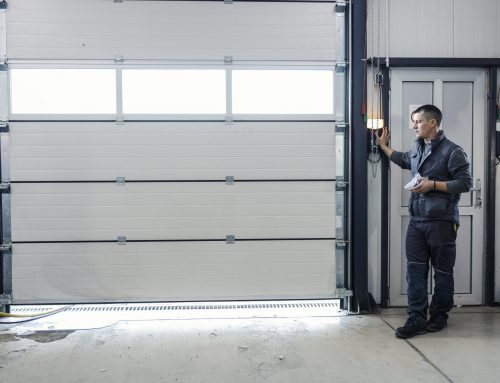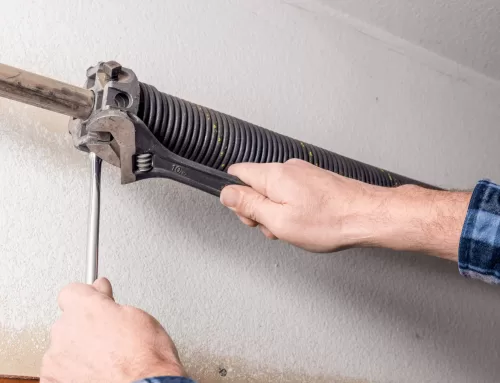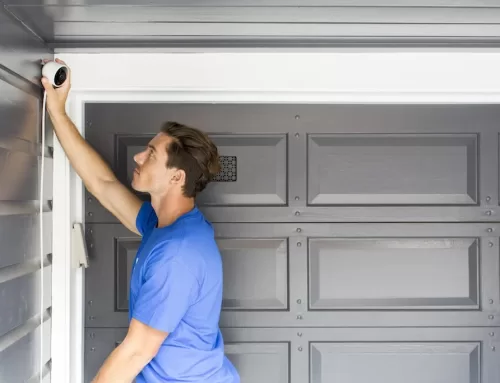Comparing Modern Garage Door Controls: OEM vs. Tailwind’s Android Auto

In the ever-evolving landscape of home automation, garage door controls have witnessed a significant transformation. Homeowners are now presented with a plethora of options, including cutting-edge OEM solutions and innovative offerings like Tailwind’s Android Auto integration.
In this article, we will explore and compare two prominent players in the market – LiftMaster’s OEM controls and Tailwind’s Android Auto compatibility.
Understanding LiftMaster’s Security+ 2.0 Technology
LiftMaster has long been a trusted name in garage door openers, and their Security+ 2.0 technology is a testament to their commitment to safety and security. We will delve into the manual programming of LiftMaster Security+ 2.0, covering topics such as programming remotes, locating the learn button, and addressing common issues like battery replacements and troubleshooting when the system isn’t functioning as expected.
The Rise of LiftMaster P3 Security+ 2.0 with WiFi Connectivity
WiFi connectivity has become a standard feature in modern smart home devices, and LiftMaster has embraced this trend with the P3 Security+ 2.0. We will explore the advantages of having WiFi connectivity in garage door controls, such as remote monitoring, smart home integration, and enhanced security features.
Tailwind’s Android Auto Integration
Tailwind has taken a different approach by integrating garage door controls with Android Auto, bringing a new level of convenience to homeowners. We will discuss the seamless integration process, the benefits of controlling your garage door through Android Auto, and how Tailwind’s solution stands out in terms of user experience.
Comparative Analysis: OEM vs. Tailwind’s Android Auto
This section will provide a detailed comparison between LiftMaster’s OEM controls and Tailwind’s Android Auto integration. Key factors such as ease of use, security features, integration with other smart home devices, and overall user satisfaction will be explored to help readers make an informed decision based on their preferences and needs.
Future Trends in Garage Door Controls
As technology continues to advance, we will briefly touch upon the future trends in garage door controls, including potential updates from LiftMaster and innovations in the Android Auto ecosystem.
Integration and Smart Home Compatibility
LiftMaster’s Security+ 2.0 boasts seamless integration with various smart home platforms, ensuring compatibility with popular systems like Google Home and Amazon Alexa. This allows users to incorporate their garage door controls into a broader ecosystem of smart devices. On the other hand, Tailwind’s Android Auto integration takes advantage of the growing popularity of Android-based systems, making it an appealing choice for users heavily invested in the Android ecosystem.
The article will delve deeper into how each system fits into different smart home setups, providing insights into their compatibility and ease of integration.
Security Features
Security is a paramount concern when it comes to garage door controls. LiftMaster’s Security+ 2.0 technology is renowned for its rolling code encryption, making it extremely difficult for potential intruders to decipher the access code. The article will explore how LiftMaster’s security measures stack up against Tailwind’s Android Auto integration, highlighting any additional security features offered by either system and addressing any potential vulnerabilities.
User-Friendly Interface and Mobile Apps
An intuitive and user-friendly interface can greatly enhance the overall user experience. LiftMaster’s controls typically come with dedicated mobile apps that allow users to monitor and control their garage doors remotely. Tailwind’s Android Auto integration, on the other hand, relies on the familiarity of the Android Auto interface. This section of the article will evaluate the ease of use for both options, considering factors such as app functionality, responsiveness, and the intuitiveness of the interface.
Cost Comparison
Cost is a crucial factor for many homeowners when choosing a garage door control system. LiftMaster’s OEM controls and Tailwind’s Android Auto integration may differ significantly in terms of pricing. This section will provide a detailed breakdown of the initial costs, potential subscription fees, and any hidden expenses associated with each option, helping readers make an informed decision based on their budget.
Updates and Customer Support
Regular updates and reliable customer support are essential for ensuring the longevity and optimal performance of any technology. The article will explore how LiftMaster and Tailwind handle updates to their systems and the quality of customer support they provide, offering insights into the long-term support users can expect from each brand.
Future Developments
As technology is a dynamic field, both LiftMaster and Tailwind are likely to introduce future updates and innovations. This section of the article will provide a glimpse into any announced or anticipated developments from both companies. It could include potential software upgrades, new features, or integrations that users can look forward to in the coming months or years. Staying abreast of these advancements is crucial for homeowners seeking a long-term investment in their garage door control system.
Real-World Case Studies
To provide a more tangible understanding of each system’s performance, the article will feature real-world case studies. These could include testimonials from homeowners who have installed either LiftMaster’s Security+ 2.0 controls or Tailwind’s Android Auto integration, sharing their experiences, challenges, and the overall satisfaction derived from their chosen solution. Real-world examples often resonate with readers, offering practical insights into how these systems function in everyday scenarios.
Making the Decision
Summarizing the key points discussed throughout the article, this section will guide readers through the decision-making process. By recapping the unique features, advantages, and potential drawbacks of LiftMaster’s OEM controls and Tailwind’s Android Auto integration, homeowners will be equipped with the information needed to make a decision aligned with their priorities, lifestyle, and preferences.
Installation and Setup
The ease of installation is a critical aspect for homeowners, whether they choose LiftMaster or Tailwind. This section will provide step-by-step guides for installing and setting up both systems. Clear instructions and tips will ensure that users can implement their chosen garage door control solution with confidence, minimizing any potential challenges during the installation process.
The Verdict
In the concluding section, the article will offer a final verdict based on the extensive comparison, user feedback, and industry trends. It will guide readers toward a definitive choice between LiftMaster’s OEM controls and Tailwind’s Android Auto integration, underlining the unique selling points that make each option stand out.
Final Thoughts
In the dynamic landscape of modern garage door controls, the decision between LiftMaster’s OEM solutions and Tailwind’s Android Auto integration ultimately hinges on individual priorities and preferences. LiftMaster impresses with its established reputation, robust security features, and seamless integration with various smart home platforms. On the other hand, Tailwind introduces a futuristic approach by capitalizing on Android Auto, offering an innovative and convenient way to control garage doors.
As we navigate the realms of security, ease of use, and future developments, homeowners are presented with a unique opportunity to embrace the evolving technologies that redefine our daily lives. Whichever path one chooses, this comprehensive comparison aims to equip homeowners with the insights needed to make an informed decision, unlocking a future where garage door controls seamlessly integrate with our increasingly connected homes.





